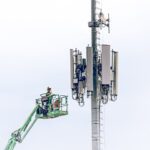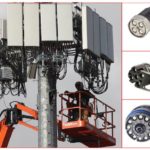DesignCon 2020 Dazzles With New High-Speed Products
The DesignCon conference and expo celebrated its 25th anniversary with an array of impressive high-speed developments.
 DesignCon 2020 celebrated its 25th anniversary with an impressive program of keynote speakers, tutorials, technical sessions, and product showcases. Over 100 presentations and panel discussions spanning 14 conference tracks focused on advances in leading-edge high-speed chip, board, and system design technology. The exhibit floor featured over 180 exhibitors, including more than 22 connector manufacturers. This number continues to grow, with Stäubli making its debut this year. An estimated 5,000+ pre-registered attendees from the global community shared the latest developments in high-speed signal measurement and transmission, as well as anniversary cake and Champagne. A key aspect of DesignCon is the opportunity it gives attendees to network among peers as well as mentor those new to the industry. DesignCon brings large contingents of top professionals from leading connector manufacturers together in an informal after-hours environment that enables sharing of career opportunities as well as collaboration in establishing cross-licensing agreements.
DesignCon 2020 celebrated its 25th anniversary with an impressive program of keynote speakers, tutorials, technical sessions, and product showcases. Over 100 presentations and panel discussions spanning 14 conference tracks focused on advances in leading-edge high-speed chip, board, and system design technology. The exhibit floor featured over 180 exhibitors, including more than 22 connector manufacturers. This number continues to grow, with Stäubli making its debut this year. An estimated 5,000+ pre-registered attendees from the global community shared the latest developments in high-speed signal measurement and transmission, as well as anniversary cake and Champagne. A key aspect of DesignCon is the opportunity it gives attendees to network among peers as well as mentor those new to the industry. DesignCon brings large contingents of top professionals from leading connector manufacturers together in an informal after-hours environment that enables sharing of career opportunities as well as collaboration in establishing cross-licensing agreements.
Since its inception, DesignCon has served as a platform for demonstrating the continuous evolution of technology and hardware necessary to support several next generations of high-performance electronic equipment. This was particularly evident this year in terms of achievable data rates as well as transmission media. Three years ago, attendees were debating the pros and cons of PAM4 signaling to achieve 56Gb/s channels in copper. Last year, we saw several demonstrations of 112Gb/s channels using PAM4. This year, 112Gb/s PAM4 was everywhere, with some connector company representatives speculating that 224Gb/s PAM4 is possible. Last year, the use of PAM8 signaling to achieve even higher speeds was dismissed, but it is now being considered a possibility, if concerns about noise margins can be addressed. Copper circuits will continue to rule supreme in the vast majority of equipment, but consideration is now being given to the use of flexible dielectric waveguide as a possible alternative. One supplier estimated that 12” channels of 212Gb/s PAM4 signals are feasible. Fiber optic links have been waiting in the wings for 20 years to be competitive with copper, but plastic wave guide may introduce yet another delay.
Another trend evident at DesignCon 2020 was the introduction of methods to bring copper signals closer to the chip. Last year, several connector manufacturers introduced “flyover”-type twinax cable assemblies to reduce PCB losses. Shielded cables were launched immediately adjacent to the processor, linking to another location on the board or I/O interface. At this year’s expo, I-PEX Connectors demonstrated extremely dense low-profile connectors that could fit under a processor heat sink. This year also saw multiple suppliers demonstrate the ability to bring a copper cable directly to a processor substrate or multi-chip module, with the future potential to make a connection directly to the top of the chip.
With the bulk of production equipment operating today at 25Gb/s or less, it may be several years before a large customer base exists for interconnects that deliver 112+Gb/s performance. Leading connector manufacturers are intent on demonstrating that they can offer a clear migration path in backplane, internal, as well as I/O interconnects as industry needs evolve.
Many of these continuing performance improvements will be dependent on advanced material science. Leading suppliers are creating partnerships with universities as well as increasing internal resources to identify materials that will enable them to support bleeding edge applications.
Live demonstrations of leading internal and I/O channels were a key aspect of most connector supplier booths. As in the past, collaboration between the connector and chip manufacturers promoted the performance of both. Processors and SerDes from suppliers such as Xilinx, Cadence, Marvell, and Credo appeared in many high-speed channel demonstrations.
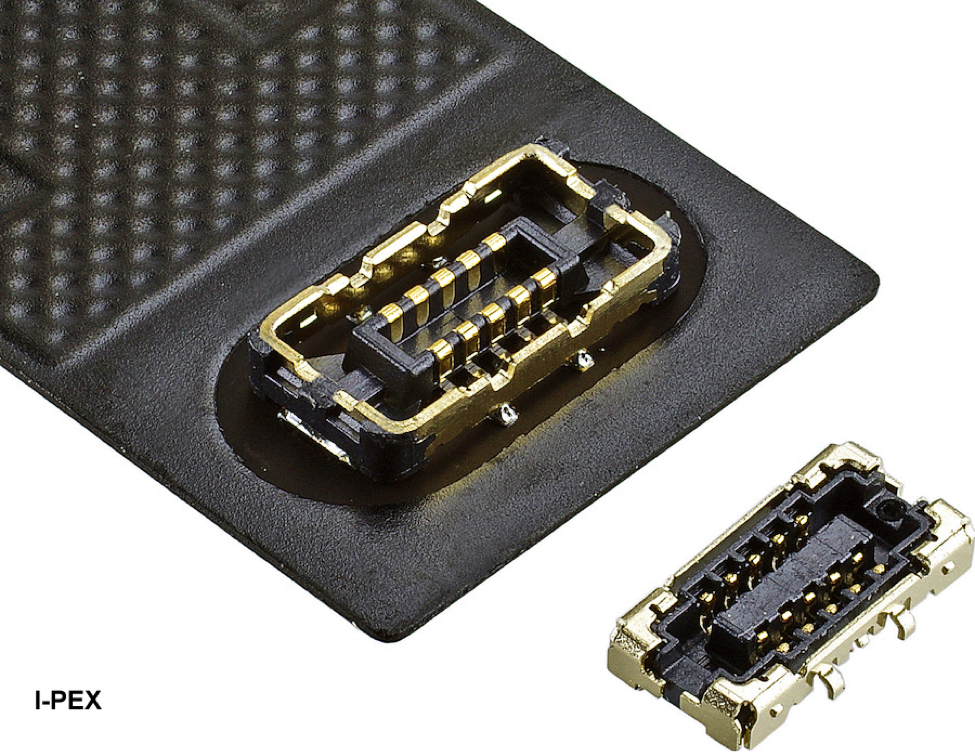
Interconnects targeting PCI Express Gen5 and Gen-Z applications, as well as coaxial connectors that are in demand for 5G antennas and base stations, were evident. I-PEX, for instance, showcased its NOVASTACK 35-HDN shielded board-to-cable connector that features contacts on 0.035mm pitch and 0.7mm stack height for mobile and hotspot applications.
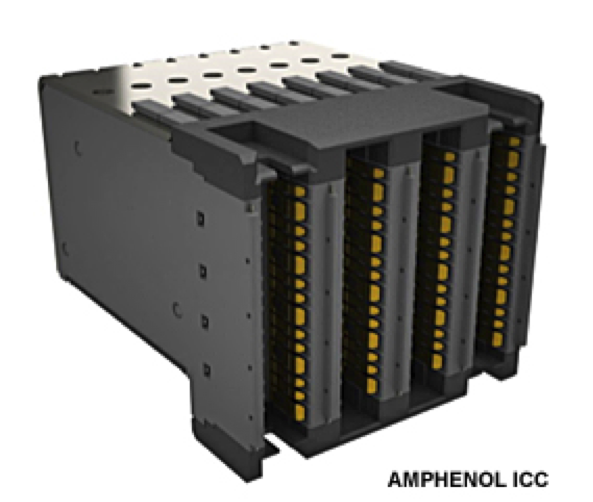
Amphenol ICC’s DesignCon 2020 booth featured an extensive array of standard and advanced interfaces, including those acquired from FCI. A new ExaMAX 2 backplane connector was introduced that is plug-compatible with standard ExaMAX but is cost-optimized while retaining the ability to support 112Gb/s PAM4 applications.
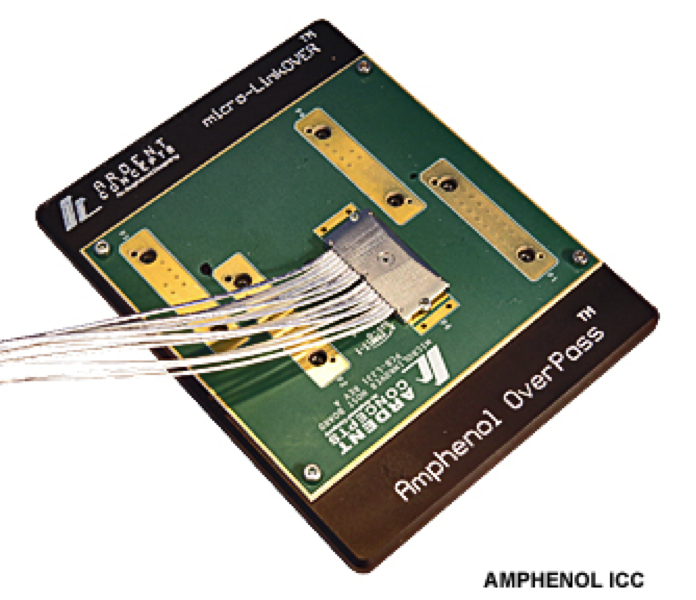
Using Ardent Concepts Micro LinkOVER technology, Amphenol ICC demonstrated the ability to provide high-density compressive interconnect at rates to 112Gb/s PAM4. This connector can be used in chip perimeter and direct-to-substrate applications.
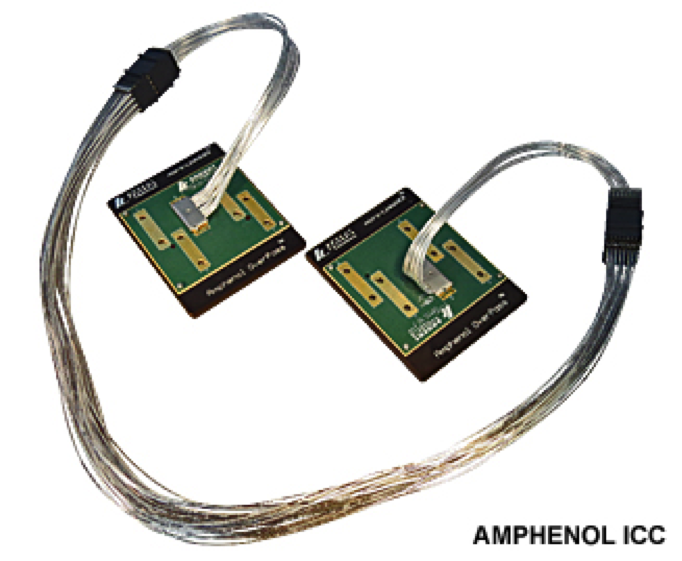
Amphenol ICC also demonstrated 112Gb/s PAM4 channels between two Micro LinkOVER board mounted connectors joined by two Paladin cable connectors and 44” of 32AWG twin-ax cable.
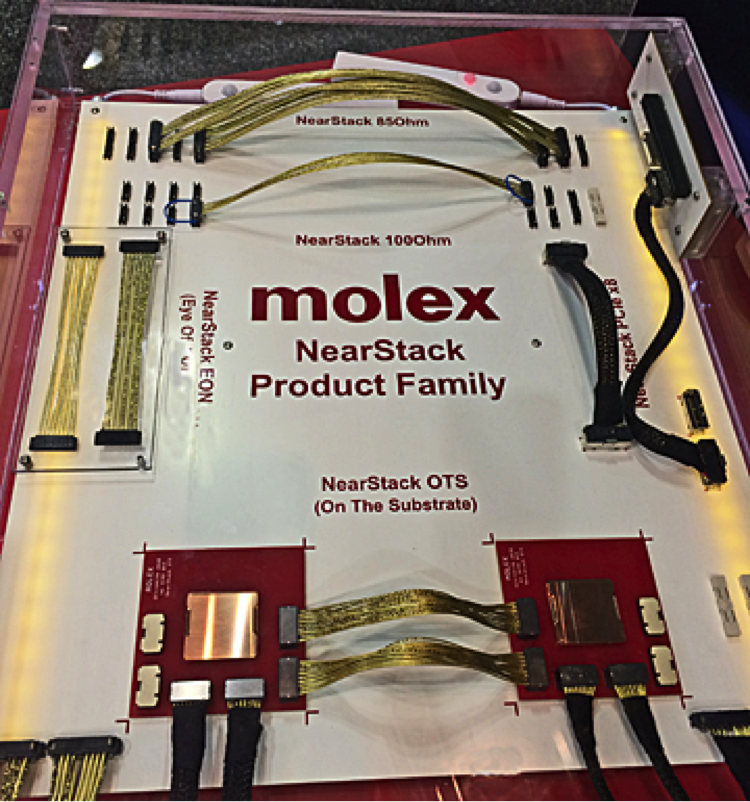
Molex featured a variety of high-speed interconnects at DesignCon 2020, including applications for its NearStack family of board-to-board and board-to-substrate connectors with performance to 112Gb/s PAM4. The company also introduced the Terminal Grid Array, which is a high-density compressive grid array rated to 112Gb/s PAM4.
Another demonstration showed the Impulse orthogonal direct midplane connector running at 112Gb/s PAM4.
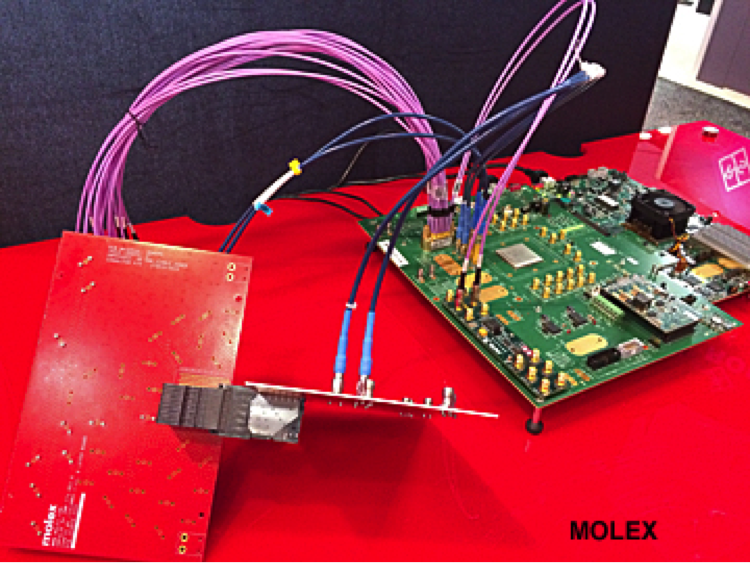
Molex also displayed pluggable I/O connectors at the expo, including QSFP-DD connectors running 112Gb/s PAM4 over 1.8m of cable, QSFP-DD connectors running 56Gb/s PAM4 over 5m of active cable, and OSFP connectors running 112Gb/s PAM4 over 2m of cable.
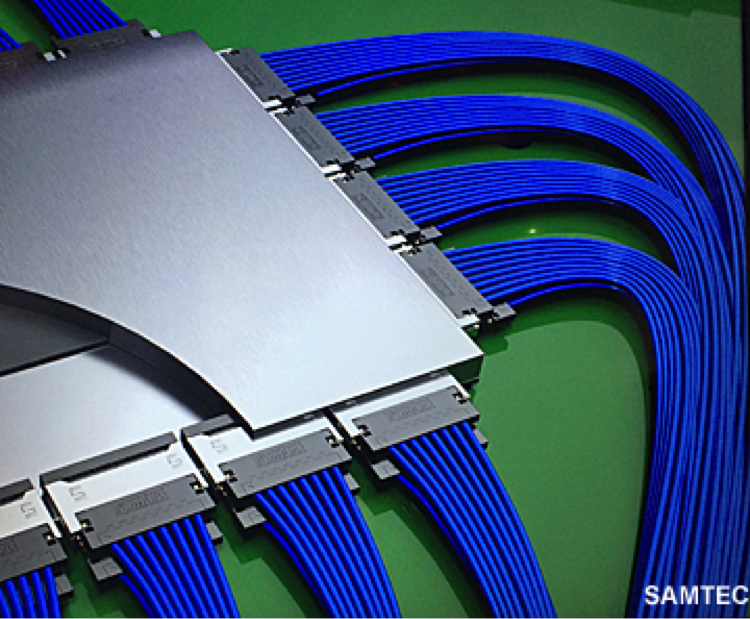
Samtec has been busy expanding its highly successful FireFly family of copper and fiber board-to-board and board-to-I/O connectors and showcased the most recent developments at the expo. The latest addition to this product portfolio is the Si-Fly, which is a direct cable-to-IC package interconnect. This high-density connector replaces the traditional BGA connection to PCB with a high-performance copper cable rated to 112Gb/s PAM4.
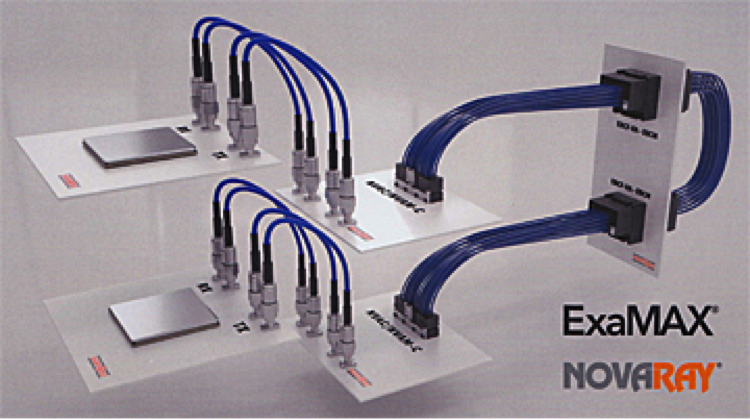
Samtec also demonstrated that a cable backplane using ExaMAX connectors can be combined with NovaRay cable connectors to produce a mid-board flyover solution operating at 112Gb/s PAM4 per channel.
Another Samtec demonstration featured a front-panel QSFP-DD connector linked to a mid-board, double-density NOVARAY interface using 34AWG twinax cable.
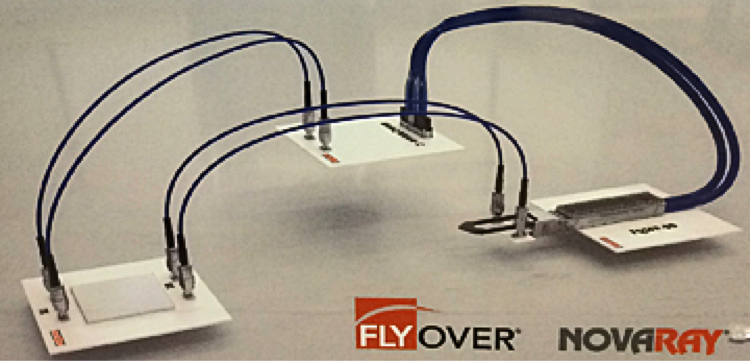
Samtec’s booth also featured its NovaRay extreme-density and extreme-performance connectors, which offer up to 112 differential pairs per square inch and are rated to 112Gb/s PAM4.
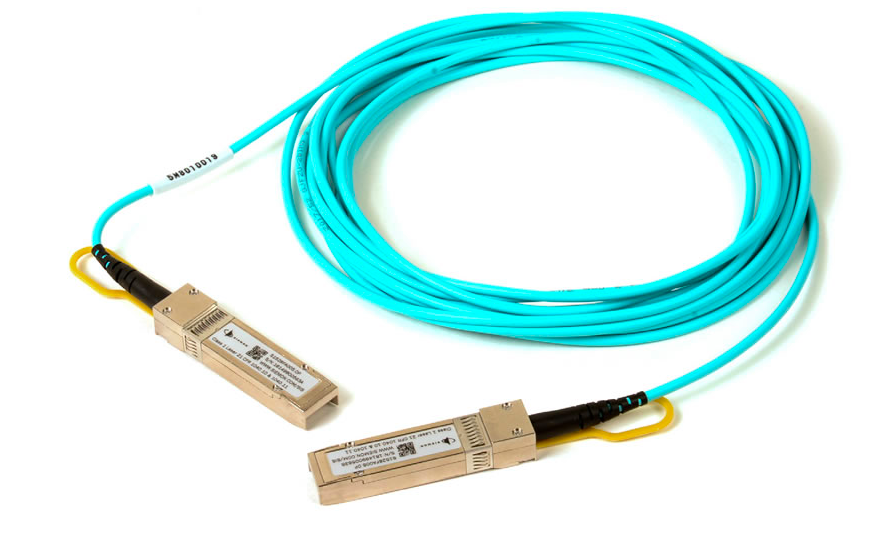
Siemon’s Active Optical Cables offer a thin, lightweight, multimode fiber cable in simple plug-and-play assemblies. These are available in a variety of speeds and form factors as well as extended lengths up to 100m.
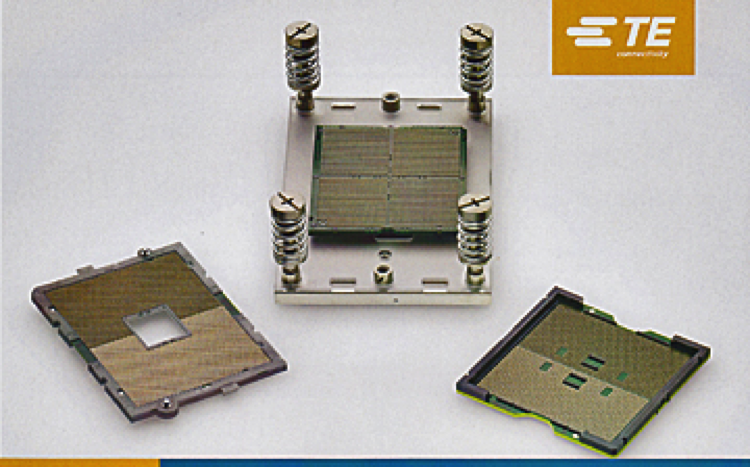 Anticipating demand for ever-higher pin counts and signal density on next-generation processors, TE Connectivity showcased two new sockets at the DesignCon 2020 expo. One configuration consists of an LGA compressive contact on one side and micro solder balls on the other. Another version features a one-piece dual compressive LGA interposer. Both sockets are designed to support exceptionally large IC packages in excess of 100mm x 100mm with pin counts to 1,024 differential pairs.
Anticipating demand for ever-higher pin counts and signal density on next-generation processors, TE Connectivity showcased two new sockets at the DesignCon 2020 expo. One configuration consists of an LGA compressive contact on one side and micro solder balls on the other. Another version features a one-piece dual compressive LGA interposer. Both sockets are designed to support exceptionally large IC packages in excess of 100mm x 100mm with pin counts to 1,024 differential pairs.
TE Connectivity also introduced several new products at the event, including the new STRADA Whisper Absolute backplane, orthogonal, and cable connectors. One demonstration showed the Absolute orthogonal connector running at 100Gb/s PAM4 in a realistic noise environment. Another demonstration proved 112Gb/s PAM4 signaling through an OSFP surface-mount connector and 2m of passive copper twinax cable.
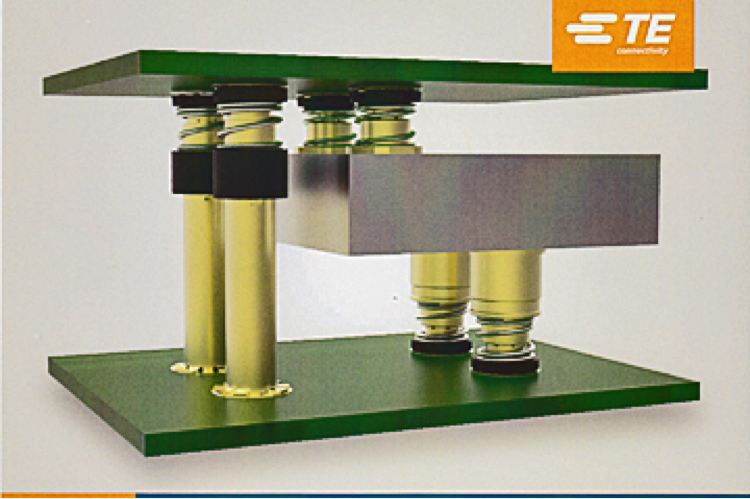 The phenomenal growth of 5G wireless infrastructure stimulated the development of TE’s ERFV board-to-board coax connector system, which was also on display. A unique spring-loaded pin makes reliable contact with a gold-plated pad on the surface of the opposite PCB and is rated for a frequency range spanning DC to 10GHz.
The phenomenal growth of 5G wireless infrastructure stimulated the development of TE’s ERFV board-to-board coax connector system, which was also on display. A unique spring-loaded pin makes reliable contact with a gold-plated pad on the surface of the opposite PCB and is rated for a frequency range spanning DC to 10GHz.
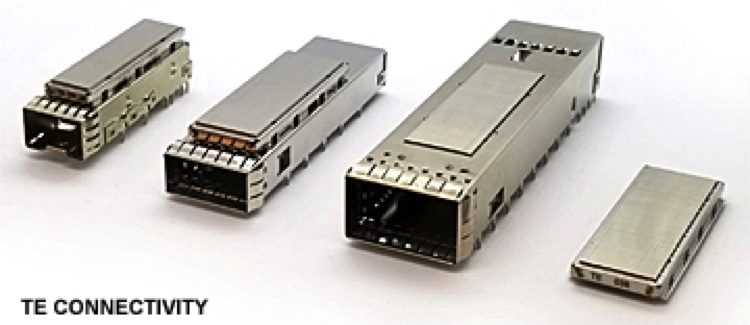 Managing excessive power and resulting heat remains a serious challenge in high-density system design, so there were several solutions on display. TE’s Thermal Bridge technology offers reduced thermal resistance between a pluggable I/O connector cage and a heat sink or cold plate. Its compressive design results in near-zero gap to optimize heat transfer.
Managing excessive power and resulting heat remains a serious challenge in high-density system design, so there were several solutions on display. TE’s Thermal Bridge technology offers reduced thermal resistance between a pluggable I/O connector cage and a heat sink or cold plate. Its compressive design results in near-zero gap to optimize heat transfer.
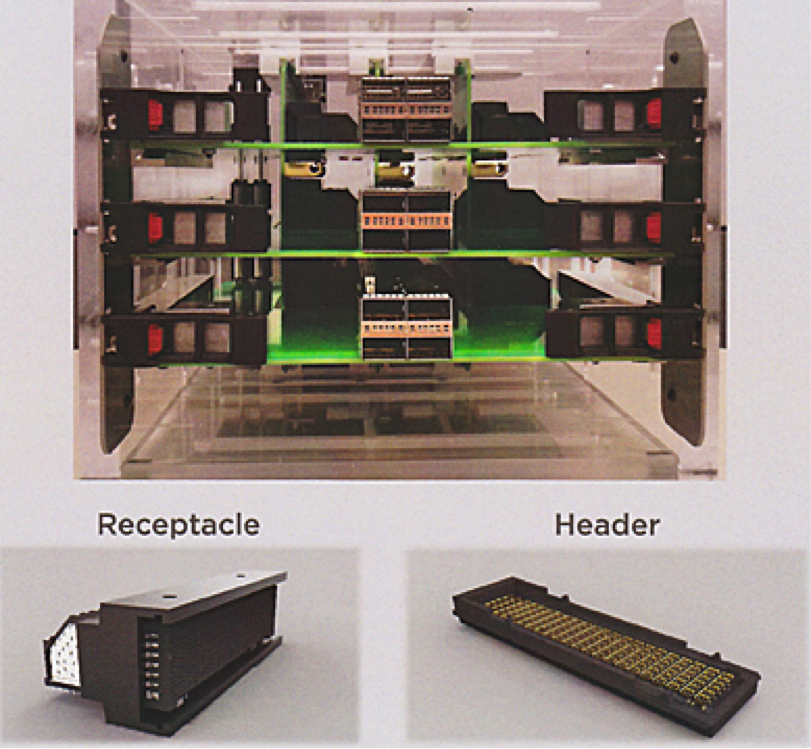 In addition, although it’s not yet a released product, TE designed and showcased a solution to the problem of airflow restriction in large-pair-count, direct-plug orthogonal connector applications. The new Slot DPO connector uses a unique slot and mating engagement mechanism to ensure adequate cooling airflow.
In addition, although it’s not yet a released product, TE designed and showcased a solution to the problem of airflow restriction in large-pair-count, direct-plug orthogonal connector applications. The new Slot DPO connector uses a unique slot and mating engagement mechanism to ensure adequate cooling airflow.
Multiple domestic and offshore suppliers of pluggable I/O passive and active copper and optical cable assemblies exhibited at the show. Assemblies targeting data center applications are designed to deliver 400Gb/s links while minimizing power consumption.
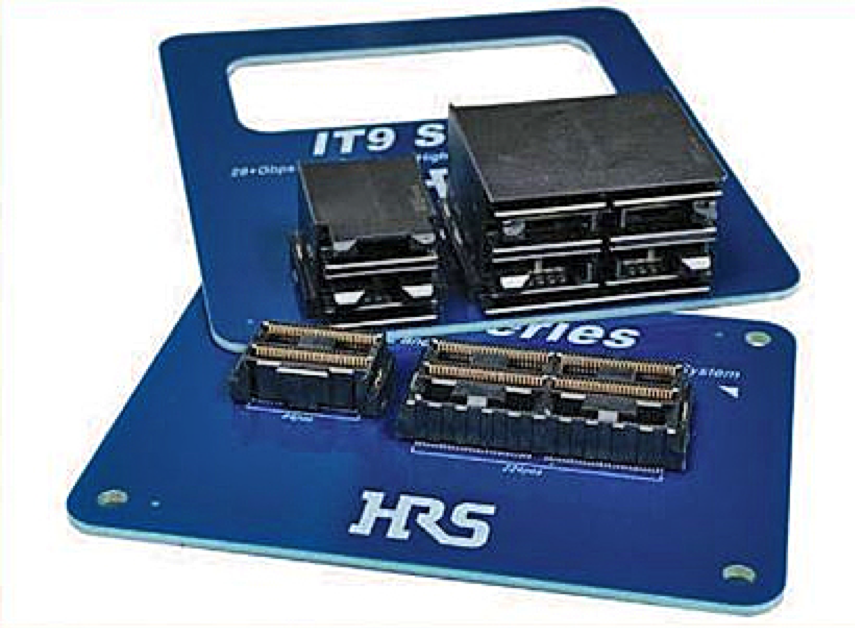
Representatives at Luxshare ICT were touting passive 2.5m OSFP 8 x 112Gb/s cable assemblies rated to 800Gb/s
The Hirose Electric USA booth featured a broad array of right-angle and stacking board-to-board connectors. The company’s new IT9 Series is a right-angle, high-density interface on a 0.5mm contact pitch. It features a unique floating design with 50 differential pairs per linear inch and is rated to 28+Gb/s.
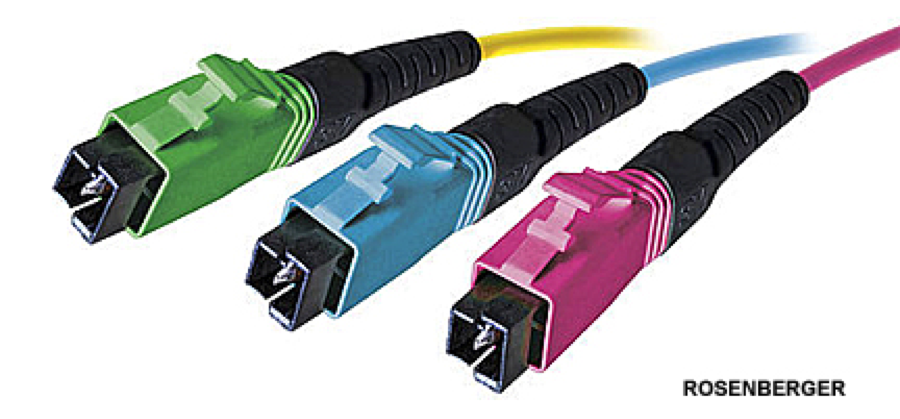
Although there were relatively few exhibitors promoting new fiber optic connectors, Rosenberger announced its HD-Expanded Beam connector designed for data center applications. Available in cooperation with 3M, the standard configuration contains 16 fibers and housings can be ganged. An optical backplane configuration with up to 144 fibers is expected by the end of 2020.
Stäubli, having changed its name from Multi-Contact, displayed its array of industrial modular connectors and line of high-power busbar connectors for blind-mating applications.
Once again, the DesignCon conference and expo demonstrated that innovation is alive and well in the chip and board industry. What was perceived as data rate limits just a few years ago are now seen as stepping-stones to the next level. Active developments in bringing copper and fiber directly to the chip substrate, advances in co-packaged silicon photonics, and even consideration in the use of plastic waveguide are expanding the interconnect options for designers of next-generation equipment.
Like this article? Check out our other new technology and high-speed articles, our Datacom/Telecom and Wire/Cable Assembly Market Pages, and our 2019 Article Archive.
- Optics Outpace Copper at OFC 2024 - April 16, 2024
- Digital Lighting Enhances your Theatrical Experience - March 5, 2024
- DesignCon 2024 in Review - February 13, 2024


